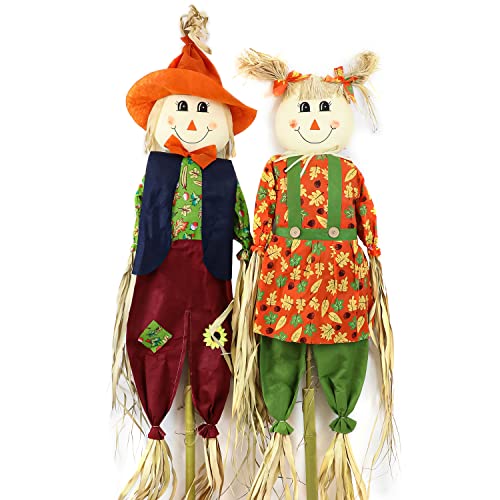Can scarecrows be used to protect crops besides just scare away birds?
Scarecrows have long been associated with their role in scaring away birds from crops. Their fearsome appearance and ability to sway in the wind create a deterrent for birds looking to feast on the farmer’s hard work. However, scarecrows have the potential to serve an even greater purpose on the farm. Innovative farmers and researchers have found alternative ways to utilize scarecrows to protect crops, making them a versatile tool in agriculture. Let’s explore some of the ways scarecrows can go beyond bird deterrence.
Scarecrows as a visual deterrent
While scarecrows are traditionally used to frighten birds, their visual presence can also deter other pests and wildlife from damaging crops. Larger animals such as deer and rabbits may avoid venturing into fields where scarecrows are strategically placed. By creating a visual barrier, scarecrows can help protect crops from these hungry intruders. Farmers have found success in reducing crop damage by placing scarecrows strategically around their fields or gardens.
Scarecrows as a part of integrated pest management
Integrated Pest Management (IPM) is an approach to pest control that focuses on long-term sustainability and reduced reliance on chemical pesticides. Scarecrows can play a role in this holistic approach by acting as a preventive measure against pests. By dissuading birds or larger animals from entering fields, scarecrows can minimize the need for other pest control interventions. This reduces the overall environmental impact of farming practices and promotes a more balanced ecosystem.
Scarecrows as a tool for pollinator conservation
Scarecrows can also be utilized to attract beneficial insects, such as pollinators, to the area. Farmers can strategically place scarecrows near flowering crops to create a visual cue for bees and other pollinators to visit. This can help increase pollination rates and improve crop yields. Creating a welcoming environment for pollinators is especially important in the face of declining bee populations and the crucial role they play in food production.
Scarecrows as a cultural and educational tool
Scarecrows have an inherent cultural significance, often associated with rural agriculture and tradition. Their presence can evoke a sense of nostalgia and serve as a reminder of the agricultural heritage of a region. Additionally, scarecrows can be used as educational tools to teach children and visitors about farming, food production, and ecology. By explaining the purpose and function of scarecrows, farmers can help raise awareness about the importance of sustainable agriculture and the interconnectedness of ecosystems.
Scarecrows as a symbol of community engagement
Scarecrows have the potential to bring communities together and foster a sense of pride and collective responsibility. By organizing scarecrow festivals or events, communities can gather to create unique and imaginative scarecrow displays. This not only adds aesthetic appeal to rural landscapes but also serves as a platform for community engagement and collaboration. Scarecrow festivals can attract tourists and boost local economies, while also promoting a sense of identity and unity within a community.






